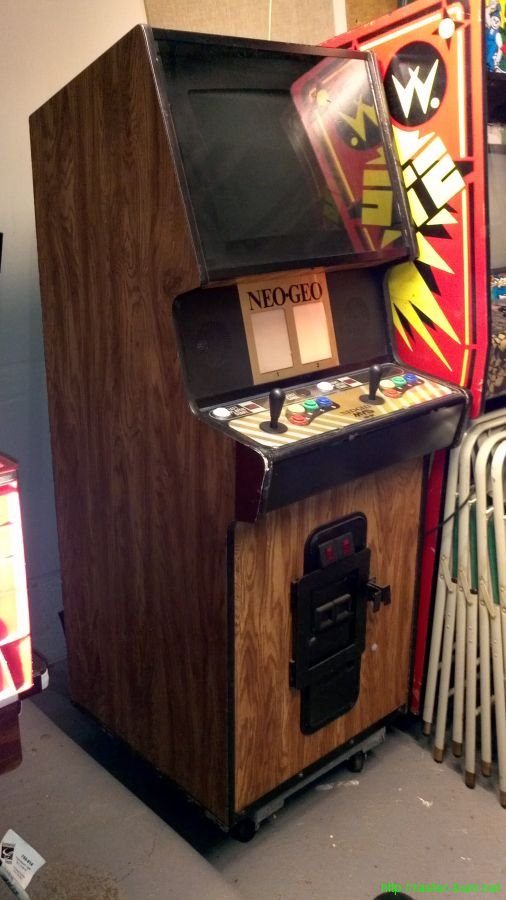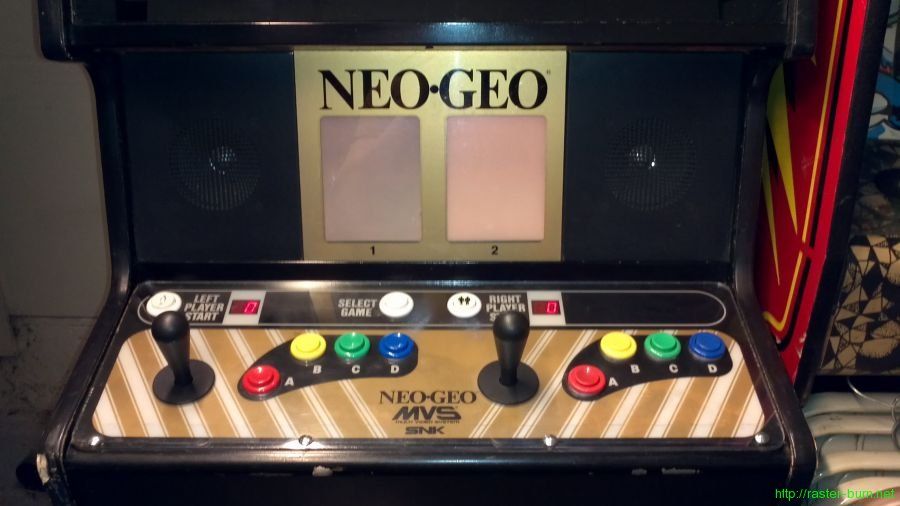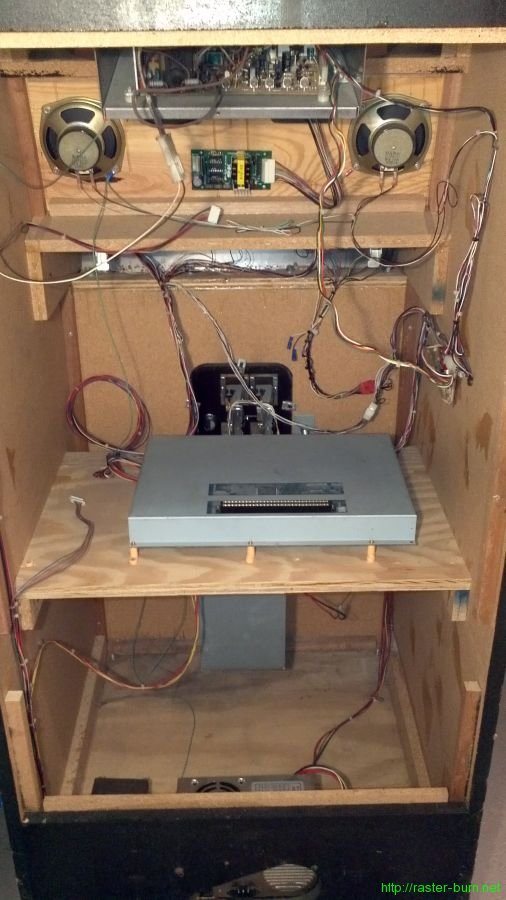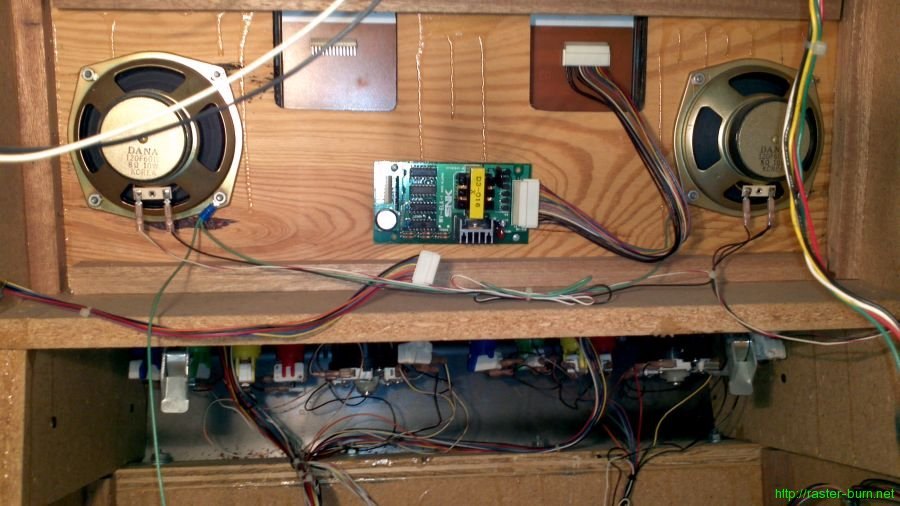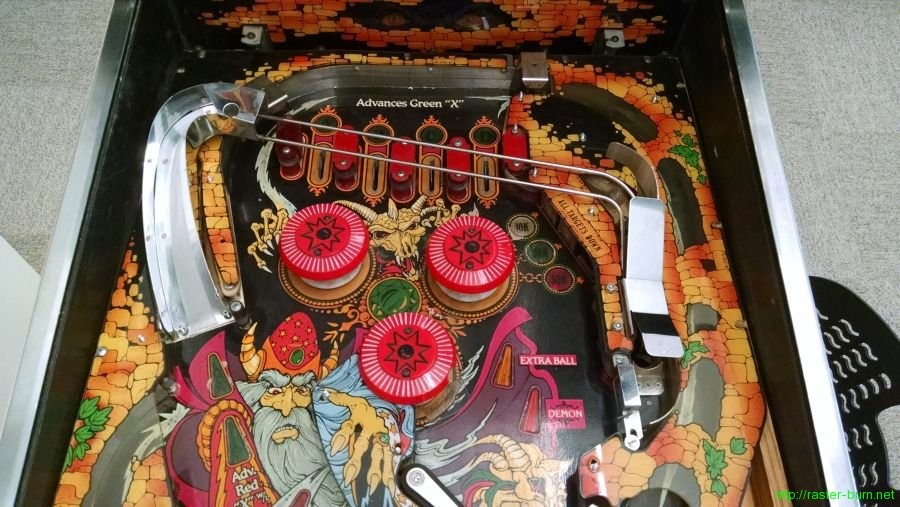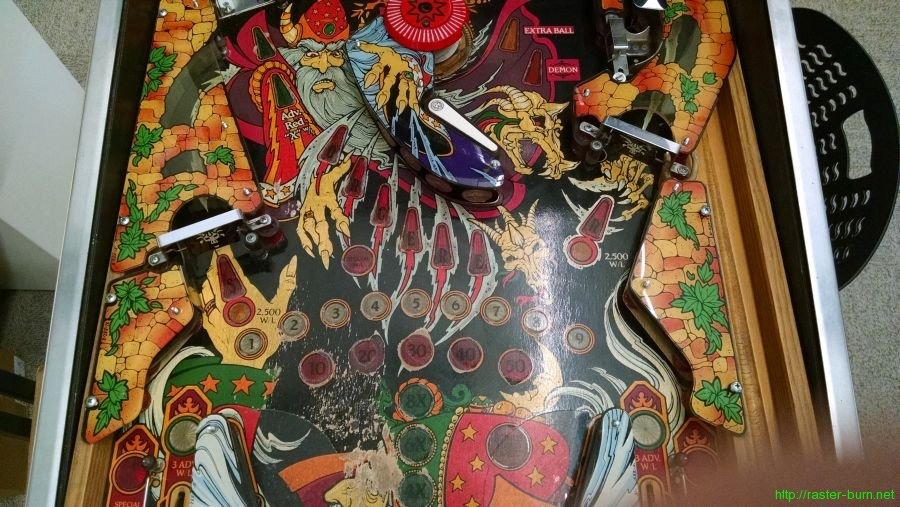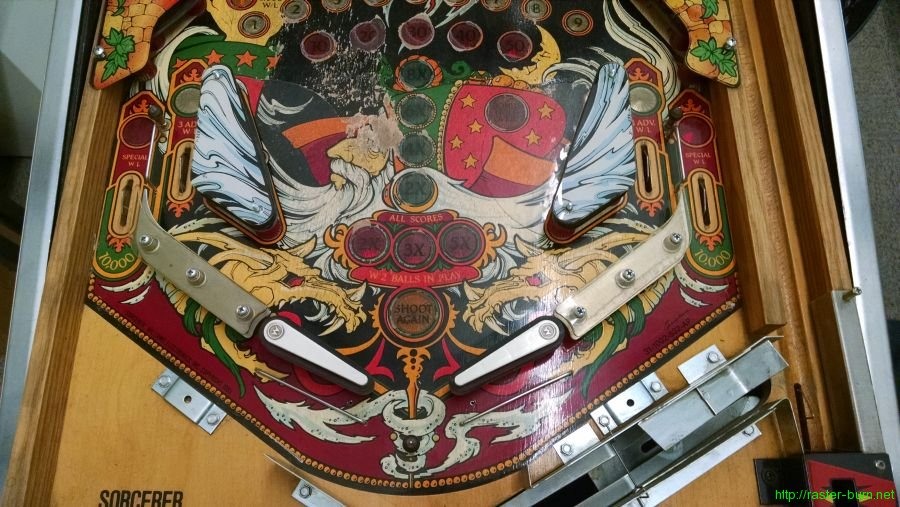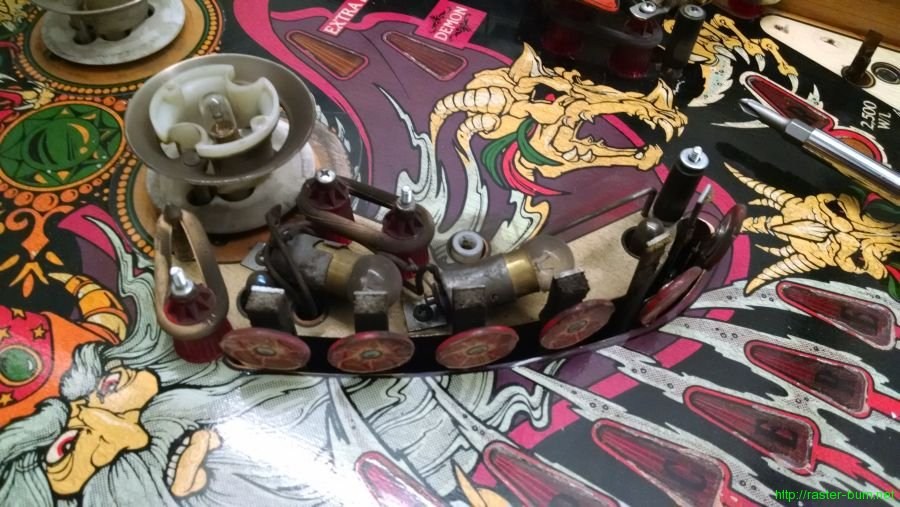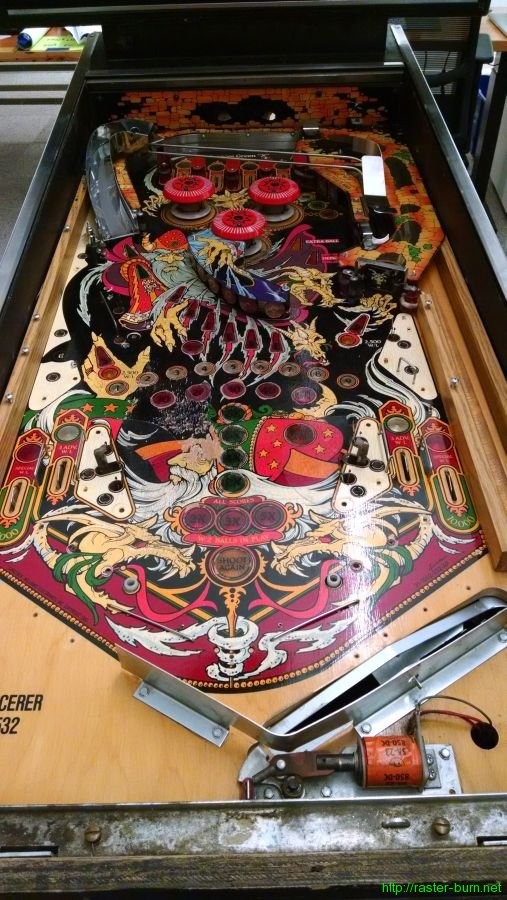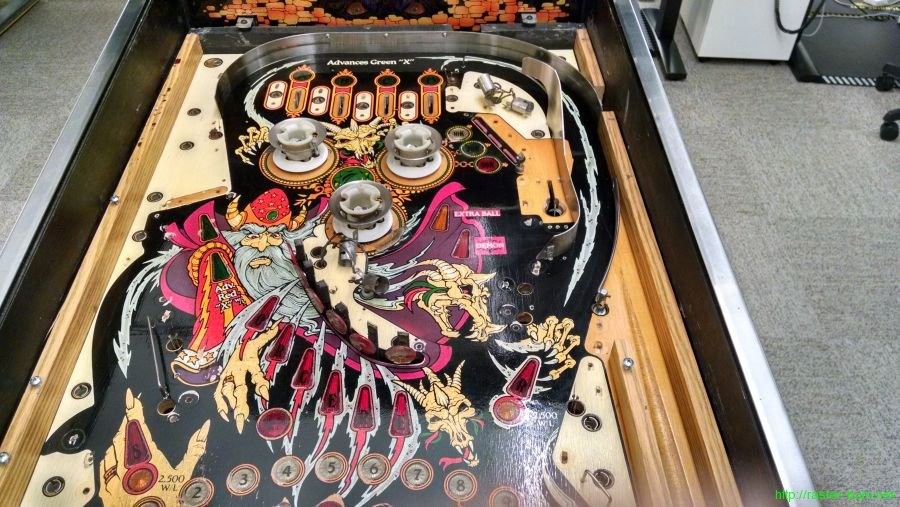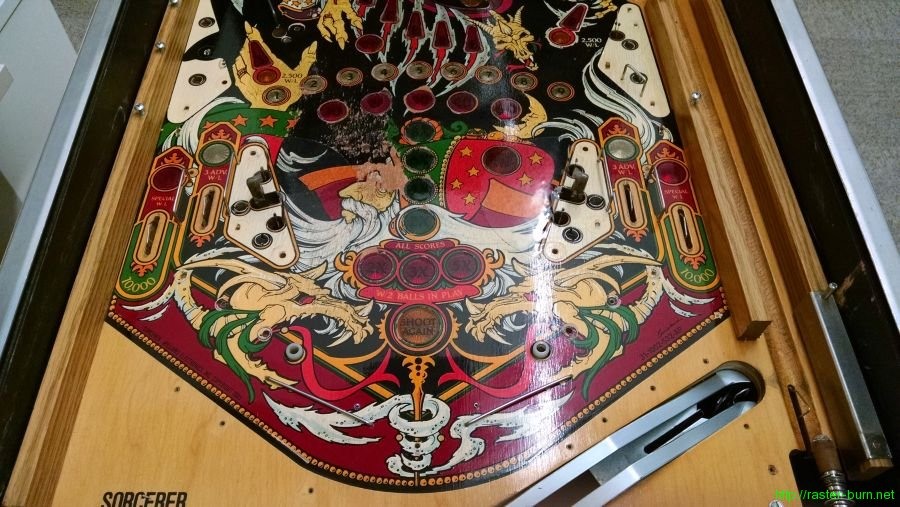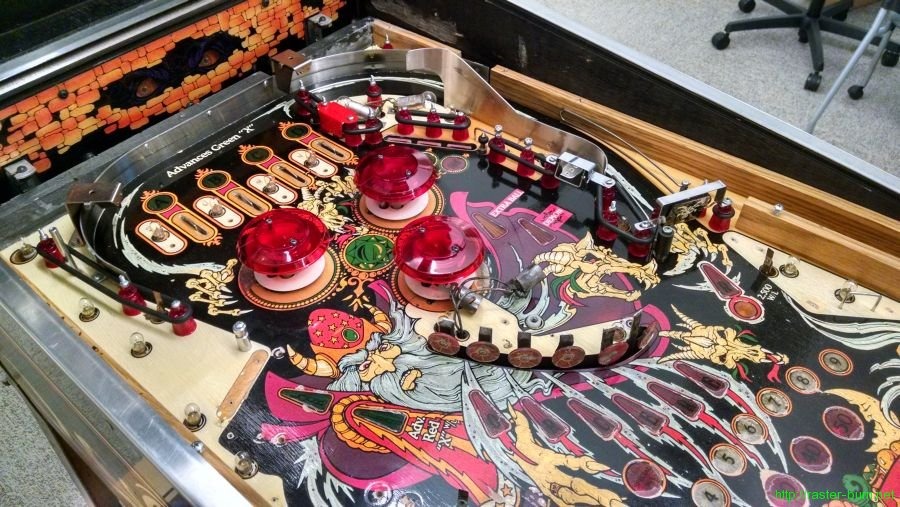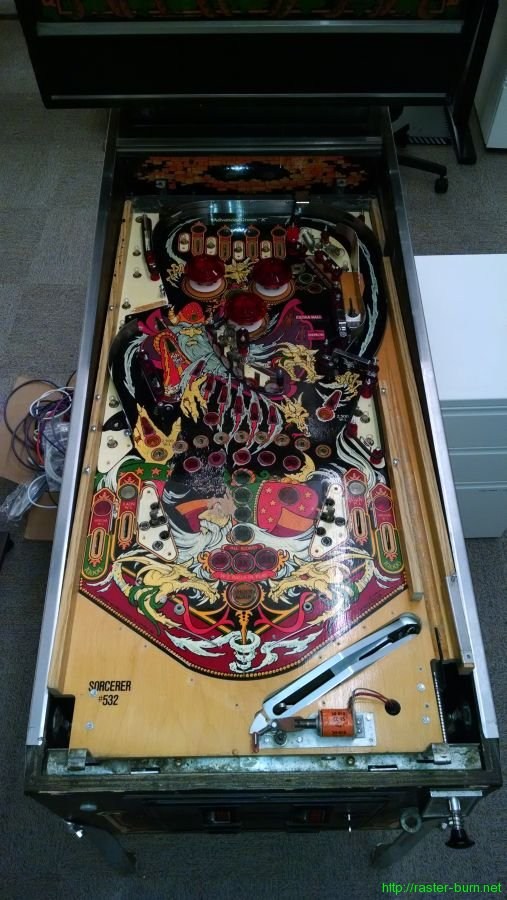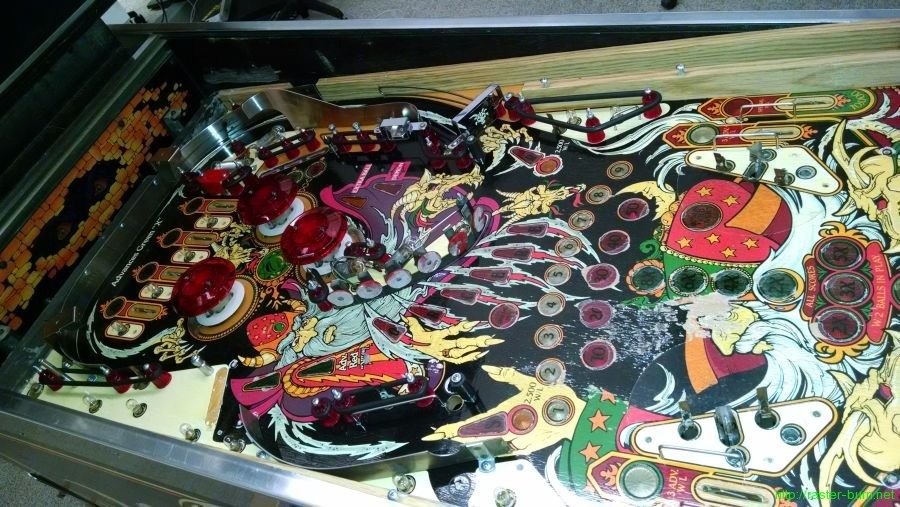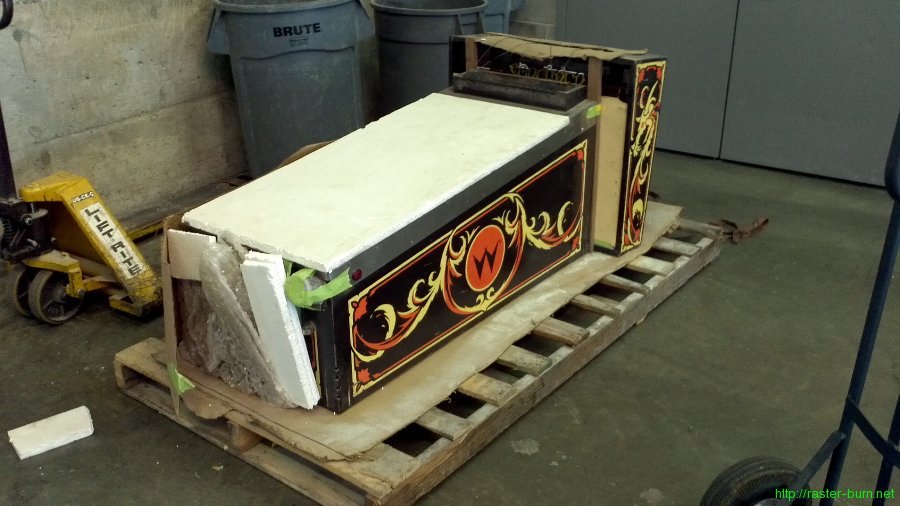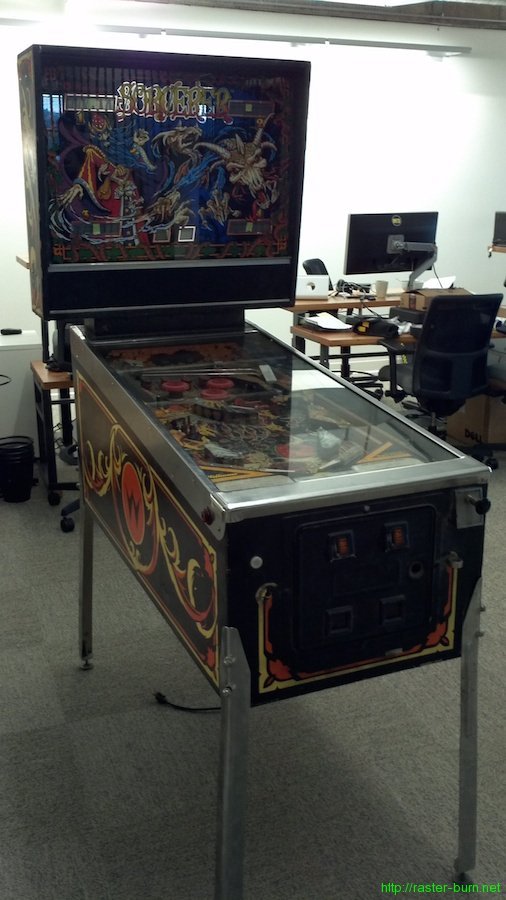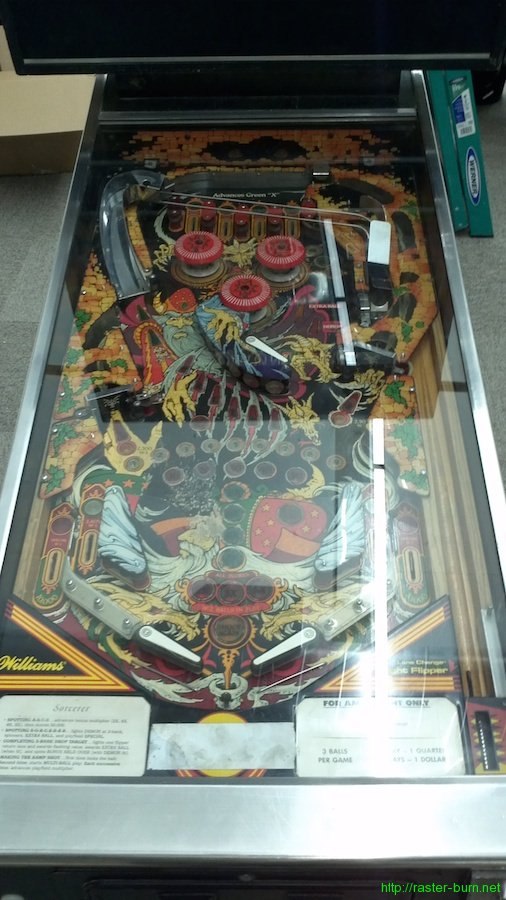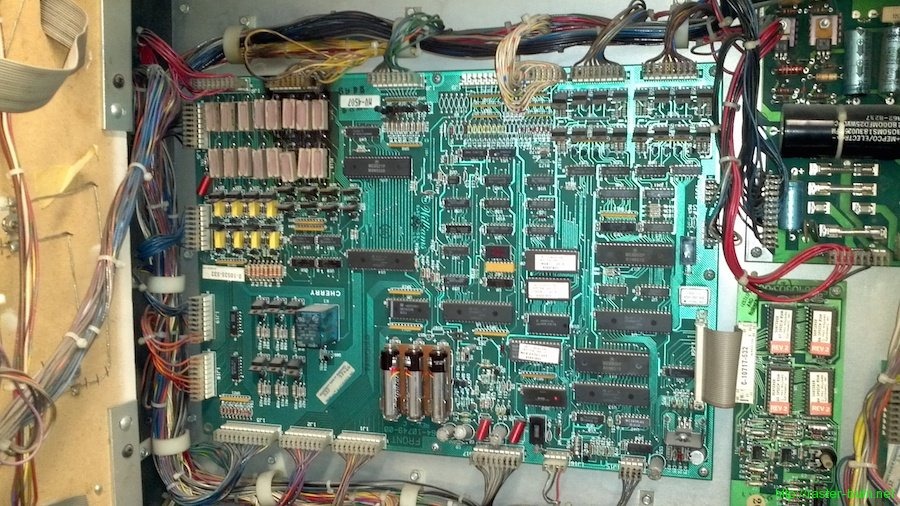The MVS-2-19 ‘Gold’ cabinet isn’t the most appreciated Neo Geo variant. It breaks heavily from the aesthetic of its siblings and takes cues from the designs of earlier generations with faux wood grain exterior treatment, a subdued black and gold color scheme, and a bizzare elevated monitor setup that looks borrowed from some of Atari’s more outlandish designs. It’s also one of only two dedicated US market Neo Geo cabinets with a monitor smaller than 25″.
The odd look and small monitor make it undesirable to most collectors, even though it’s a bit of a rarity to find one. I’ve always found a bit of charm in the throwback styling though, and irrationally love anything with that stupid wood grain vinyl on it. The smaller monitor size also makes it blend better in a row of older games like mine. So I’d been looking for an MVS-2-19 for a while, not really expecting to find one locally.
I got a text message from a friend with a picture of one a few months ago though. Someone we both know who churns through large lots of used cabinets had it, and had been under the impression it was a poker machine conversion. My friend clued him in on it being a sorta scarce dedicated cabinet, and asked him to hold onto it for a bit before doing anything with it so I could check it out. I went over there a few days later and quickly made a deal on it. Picked it up in exchange for refurbishment of five monitor chassis I’d been working on, not too bad.
It isn’t a perfect example, but it’s also a lot better than many out there.
After some cleaning, the most important parts to get in good condition were very nice indeed. The gold colored control panel overlay and mini marquee holder are both unique to this design, and have never been accurately reproduced. Usually they’re destroyed by vandals or heavy use. Fortunately someone put a plexiglass plate over the overlay on this cabinet and it saved it from most wear, and the marquee holder didn’t get scratched up or tagged like a lot of them do.
The interior was mostly unmolested, even found a bunch of documentation inside for a few different Neo Geo boards. It looks like the two slot board isn’t the original one, but it’s the right kind for the cabinet, and didn’t have any acid damage.
The electroluminescent panels were unplugged when I got it, and predictably don’t do anything but make an awful buzzing noise when plugged in. They’re almost always broken in MVS cabs, and while they can be repaired that’s pretty low priority for me since they’re purely cosmetic.

